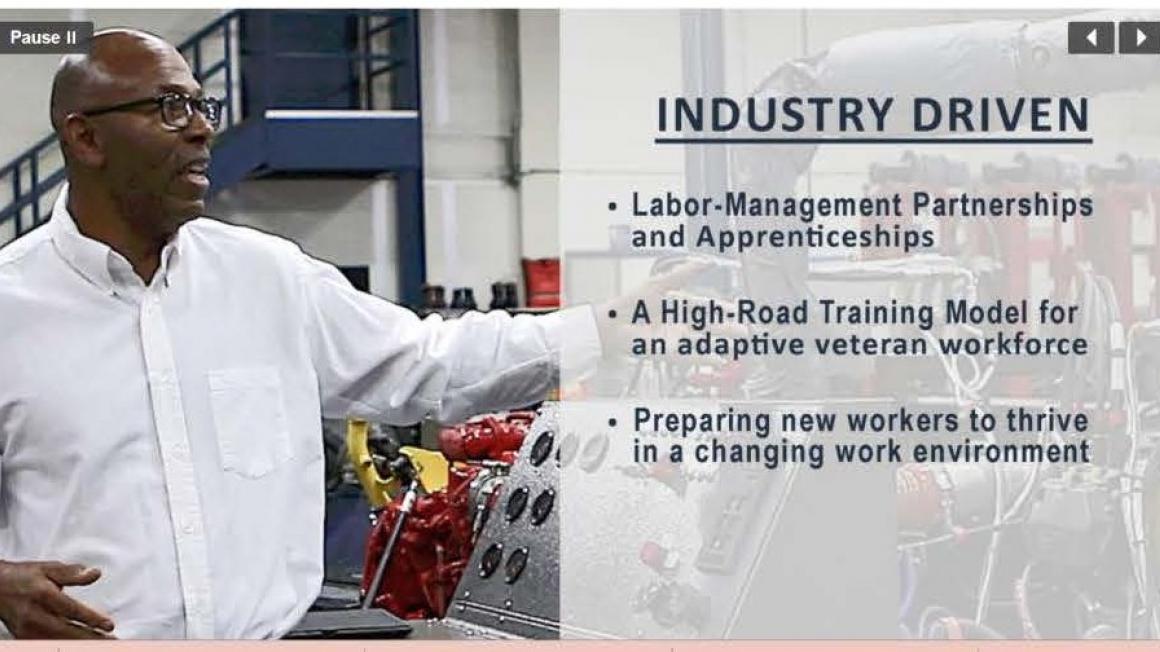VTA is helping to lead four other Northern California transit agencies to create successful labor/management partnerships, aimed at improving the quality of transit careers. The work is being done through the California Transit Works consortium, which brought the agencies together recently, virtually, to thank frontline workers for their dedication through these difficult times. In addition, the Labor/Management partners from each agency re-committed their respective partnerships at each of the agencies.
As an added special element, ATU International President John Costa joined the virtual meeting to talk about why he committed his union to encouraging such programs at transit agencies throughout the U.S., after visiting VTA’s program.
“One of the things I’ve long fought for is respect for those who are doing the job,” said Costa. (The labor/management partnership) “brings pride to the workforce, to the workers.”
The panel discussion that included Sacramento Regional Transit District, San Joaquin Regional Transit District, AC Transit and Golden Gate Transit, in addition to VTA, focused on how to grow their labor/management partnership programs. The objective of these partnerships is for employees and management to collaborate on ways to improve the work environments, job training and job quality of life for bus operators, mechanics, and other transit professionals, giving workers a greater say in designing their work environment. More experienced workers are matched with newer employees in training to show them the ropes and serve as a sounding board and source of advice. And in VTA’s case, program participants earn college credit from Mission College during their job training.
Workforce Development Coordinator for the Amalgamated Transit Union International Jamaine Gibson is a product of VTA’s Joint Workforce Development program. Gibson drove a VTA bus for nine years, working his way up the career ladder to eventually manage the program from the union side. Gibson recently moved to the International Union office to develop mentorship programs at transit agencies across the country and credits his involvement with the mentorship and apprenticeship initiative at VTA, for his career success.
“The greatest thing you can do as a mentor is passing on your knowledge to hopefully make it better for (other transit employees). We are finally being recognized at a high level for the work that we do,” said Gibson.
California Transit Works, a statewide consortium of transit agencies, labor unions, and community colleges that promotes training partnerships to address critical issues in public transit, brought the agencies together at the recent virtual meeting to learn from each other as they figure out how to move their programs ahead.
“The mentorship program creates a lot of responsibility among the workers,” said Shane Weinstein, of Golden Gate Transit’s union ATU Local 1575, where a mentorship program is taking shape. “It creates growth, and makes people understand this is a career that will take them somewhere,” Weinstein said.
VTA General Manager and CEO Nuria Fernandez, who also serves as Chair of the American Public Transportation Association, touted the importance of the program concept during unprecedented emergencies like the current pandemic.
“The labor/management relationship has shown to be a tremendous success, providing mentors to help new employees navigate their way through what is a challenging job, even in the good times,” said Fernandez. “These circumstances make programs like the Joint Workforce Investment even more important because today’s challenges require our cooperation and partnership more than ever.”
One of the unique assets of these kinds of labor/management partnerships, according to VTA’s union Program Coordinator Robert Hannibal is the ability to change with the times. “The beauty of the program is that it is fluid, we can change things to adapt to what is needed for the mentee. Through the years, things have changed, and the program looks different now than it did when it started,” said Hannibal. Those changes include the employee retention rate, which went from 50% to 95%, something those other transit agencies are also aspiring to reach.
The work to reengage these and other agencies continues, pandemic or no pandemic, with an eye on helping to improve the career track of transit workers as well. Happy, well-trained, fulfilled workers = satisfied customers. It’s a win-win.
Learn more about California Transit Works here:

